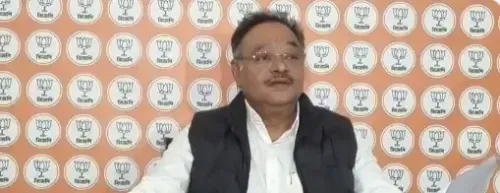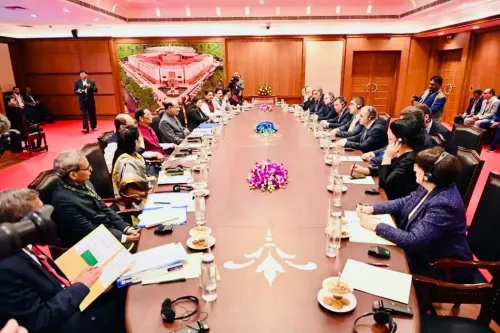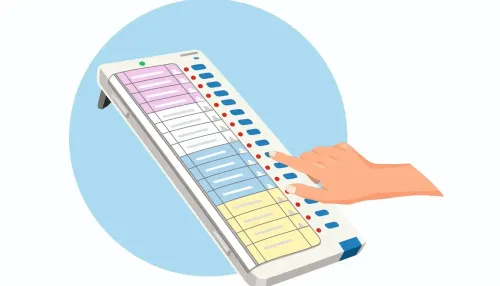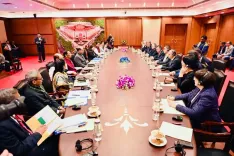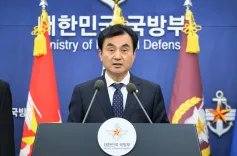Has India Emerged as a Leader in Telecom Services?
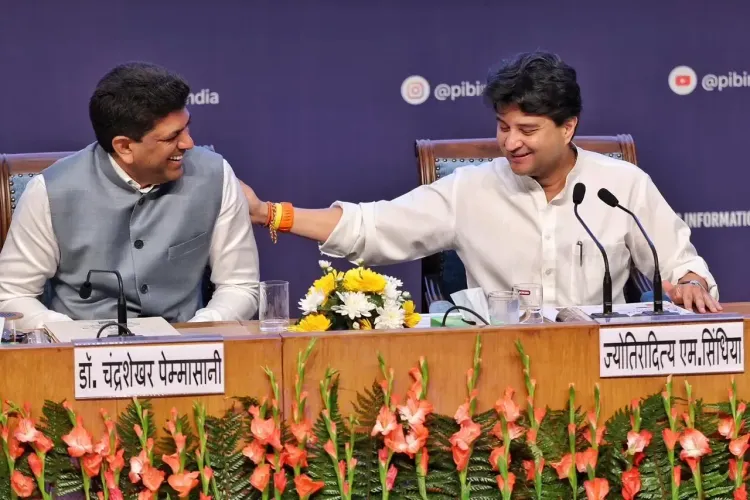
Synopsis
Key Takeaways
- India has become a leader in telecom services and products.
- BSNL has achieved operational profitability after 18 years.
- The 4G Saturation Project is progressing rapidly.
- Significant advancements in telecom security have been made.
- India is on track to become a digital powerhouse.
New Delhi, Oct 17 (NationPress) India has transitioned from being a follower to becoming a leader in the telecom sector, excelling in both services and products, stated Union Minister for Communications and Development of North Eastern Region, Jyotiraditya M. Scindia, on Friday.
The minister highlighted that the number of customers nationwide and the optical fibre cable network have grown significantly.
During a press conference discussing the accomplishments of the Ministry of Communications, which includes the Department of Telecommunications (DoT) and the Department of Posts (DoP), Scindia noted the remarkable increase in internet connections and the substantial growth of broadband connections over recent years.
"India stands unrivaled when it comes to exponential scale. If classified as a digital nation, India would rank as the third-largest digital nation globally. The Prime Minister's vision from 11 years ago, to create an invisible digital highway that supports a multitude of applications, is now a reality," he emphasized.
Scindia described the financial turnaround of BSNL as one of the most significant achievements of the Telecom Department.
After 18 years, BSNL has reported profitability at the operational level, achieving Rs 262 crore in Q3 and Rs 280 crore in Q4 of FY2024-25.
"BSNL's EBITDA has surged threefold to Rs 5,395 crore, while its losses have decreased from Rs 5,400 crore to Rs 2,400 crore," Scindia remarked.
This transformative national progress is largely driven by the successful rollout of a fully indigenous 4G stack, a major technological advancement that places India among an elite group of nations capable of developing its own complete telecom technology.
As part of the government's initiative for 100% telecom saturation, India has reached 75% of its goal within a year. Out of 17,000 towers planned under the 4G Saturation Project, nearly 13,000 have already been installed.
The aspirational district scheme has attained 81% saturation, and regions affected by Left-Wing Extremism (LWE) have progressed from zero to 57% in Phase I and from 74% to 87% in Phase II. For island territories, execution has improved from 38% to 84%.
To expedite pending projects, the ministry has launched a real-time dashboard for monitoring and resolving land, forest, and security issues.
Scindia also highlighted the DoT's advancements in telecom security. AI-driven tools like ASTR have disconnected over 82 lakh fraudulent mobile connections, and the Financial Fraud Risk Indicator system has thwarted scams worth close to Rs 200 crore.
"Google's participation in this effort is a significant boost," he noted. A unified digital intelligence platform (DIP) now facilitates data sharing among more than 750 government and private entities, including state governments, banks, and law enforcement agencies.
The telecom regulator TRAI has implemented monthly reporting for service quality, replacing the previous quarterly cycle. Telecom operators are now mandated to publicly map towers and meet benchmarks, such as maintaining less than 2% call drop rates and latency below 50 milliseconds by April 2026.
The ministry has also introduced a single-window clearance portal to streamline right-of-way approval timelines, reducing average clearance time from 448 days in 2019 to just 33 days in 2025.
Scindia underscored the ministry’s commitment to accountability and collaboration, stating, "Every Chief General Manager at BSNL operates as the CEO of their circle, establishing quarterly targets and consistently reviewing them."


